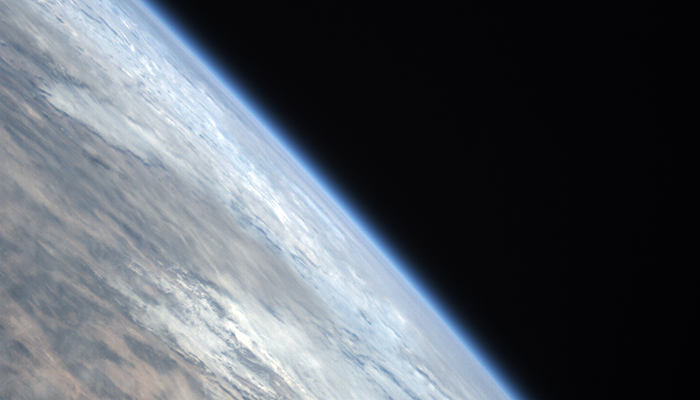Aalto-1 was launched into space a year ago – the Otaniemi ground station is already being prepared for the launch of the next satellites
Aalto-1 has successfully cleared the difficulties it has faced in orbit. The largest amount of research data has been provided by the RADMON radiation monitor carried by the satellite.

Measurements made using the RADMON radiation monitor carried by Aalto-1 on a map. The image shows the intensity of a radiation flux on Aalto-1's orbit, i.e. at the distance of approximately 510 kilometres from the surface of the earth, between October and January. The red dots describe the intensity of proton radiation and the blue dots the intensity of electron radiation; the darker the dot, the higher the intensity. Instead of geographical coordinates, the researchers used the geomagnetic coordinates, where the poles are Earth's geomagnetic poles. Image: University of Turku
Carried by an Indian PSLV rocket, the Aalto-1 nanosatellite, designed and built by Aalto University students, was launched into space on the morning of 23 June. The long-awaited launch went well, and connection to the satellite was established the very same morning.
How has Aalto-1 satellite's first year in space gone, project leader, Assistant Professor Jaan Praks?
‘The satellite operation has required surprisingly lot of technical adjustments; for example, the slow radio communication link has made it cumbersome to download images and to update software. Overall, after one year, the satellite is functioning well, and all systems are fully functional. The latest software update helped us gain better control of the satellite’s attitude and it is now easier to take photographs and download images. The mission continues, and we are currently preparing a new spectrometer imaging campaign.’

North America captured by Aalto-1's VIS camera.
Over the year, the Otaniemi ground station has undergone major improvements. The student team headed by Petri Niemelä and Samuli Nyman has updated the software, improved the control of the antennas and developed remote use of the station. In the future, the students will make the ground station operations fully Software Defined Radio-based, which will also enable its flexible use in the future space missions.
‘The intention is to use the same ground station for controlling the Suomi 100 satellite, planned for launch later this year, the Aalto-3-satellite, currently under construction, as well as the Foresail-1 and Foresail-2 satellites, being built as part of the Academy of Finland's centre of excellence,’ Praks explains.
Into the atmosphere and burning as a shooting star
The Aalto-1, weighing four kilos, carried into orbit state-of-the-art Finnish technology: an imaging spectrometer built by VTT, a radiation monitor jointly constructed by the Universities of Turku and Helsinki and a plasma brake developed by the Finnish Meteorological Institute, which is aimed at reducing the amount of space debris. The largest amount of research data has been provided by the RADMON radiation monitor. Rami Vainio, Professor at the Space Research Laboratory of the University of Turku, describes the year as a total success.
‘We have reached all our technical and scientific objectives: we now understand quite well the response of the device to the electron and proton radiation, and we have mapped the radiation environment in the Low Earth Orbit. We are currently in the process of analysing the temporal changes in the electron belt and their dependency on the properties of the solar wind flowing past Earth. According to our measurements, the north-south component of the solar-wind magnetic field best forecasts how intensive the electron radiation is in the Low Earth Orbit. We will present our results in the COSPAR conference in Pasadena next month.’
Aalto-1's journey in space was originally intended to last approximately two years. According to Praks, the success of the plasma break test will decide how well this timetable will hold. The idea with the break, built by the Finnish Meteorological Institute, is to slow down the satellite, which makes it descend into a lower orbit and finally crash into Earth's atmosphere.
‘If everything goes according to plan, Aalto-1 will start braking in about six months’ time. That way it will not remain as space debris in orbit, but it will crash into the atmosphere, where we will see it as a small shooting star for the last time. If, for one reason or another, the breaking system were not to function, the mission and the measurements with other payloads could continue for years.’
Further information:
Jaan Praks
+358 50 420 5847
jaan.praks@aalto.fi
http://spacecraft.aalto.fi/
Rami Vainio
+358 29 450 4294
rami.vainio@utu.fi


